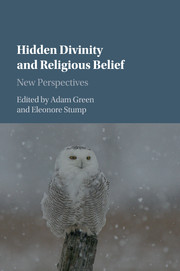Book contents
- Hidden Divinity and Religious Belief
- Hidden Divinity and Religious Belief
- Copyright page
- Dedication
- Dedication
- Contents
- Contributors
- Book part
- Introduction
- Part I The Argument from God’s Hiddenness against God’s Existence
- Part II God’s Hiddenness: Overlooked Issues
- Part III God’s Hiddenness: Faith and Skepticism
- Part IV Reasons for Hiddenness and Unbelief
- Part V God’s Hiddenness and God’s Nature in the Major Monotheisms
- Part VI God’s Hiddenness: Suffering and Union with God
- References
- Index
- References
References
Published online by Cambridge University Press: 05 January 2016
- Hidden Divinity and Religious Belief
- Hidden Divinity and Religious Belief
- Copyright page
- Dedication
- Dedication
- Contents
- Contributors
- Book part
- Introduction
- Part I The Argument from God’s Hiddenness against God’s Existence
- Part II God’s Hiddenness: Overlooked Issues
- Part III God’s Hiddenness: Faith and Skepticism
- Part IV Reasons for Hiddenness and Unbelief
- Part V God’s Hiddenness and God’s Nature in the Major Monotheisms
- Part VI God’s Hiddenness: Suffering and Union with God
- References
- Index
- References
- Type
- Chapter
- Information
- Hidden Divinity and Religious BeliefNew Perspectives, pp. 278 - 292Publisher: Cambridge University PressPrint publication year: 2016



